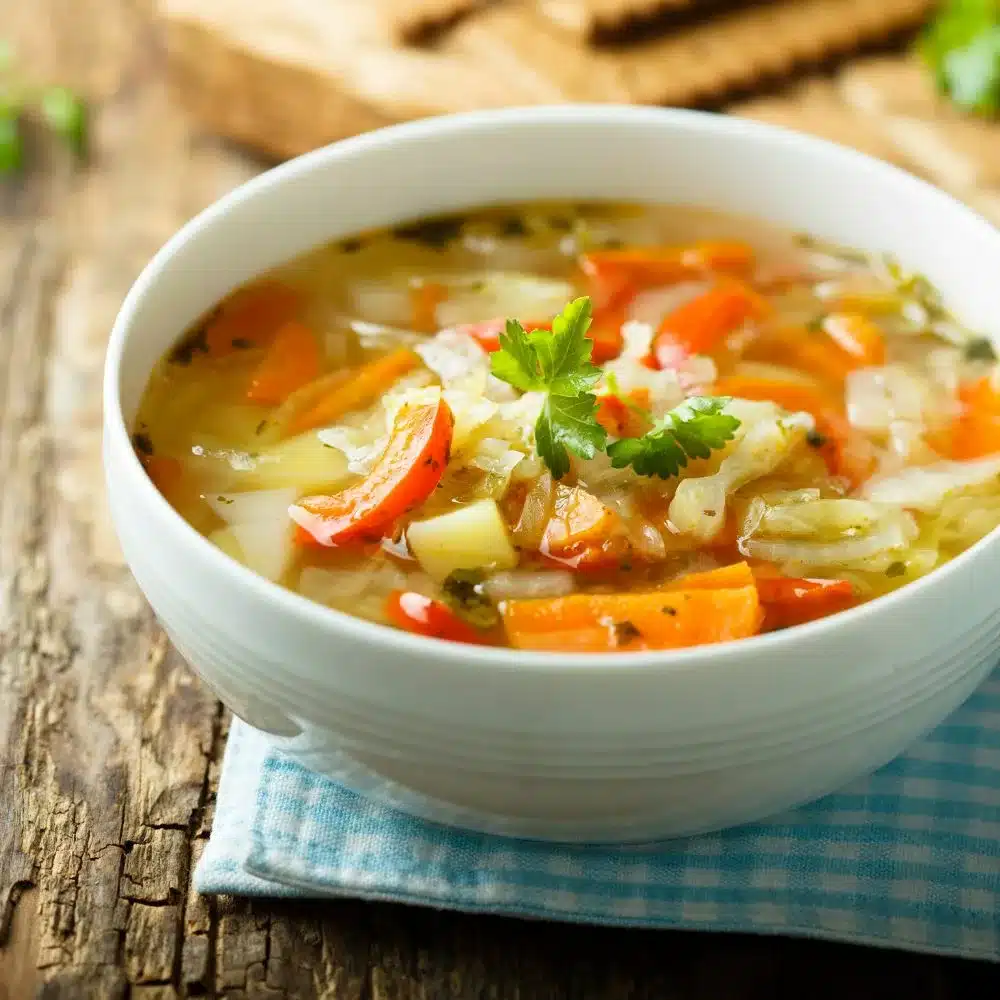It’s Fall, Y’all! Sweater weather has arrived and along with football games and falling leaves, this happens to be a great time of year to reassess our day-to-day nutrition. Since fresh produce from the garden and supermarket is dwindling, it’s worth taking some time to see if we’re still getting those 5-9 recommended daily servings of fruits and vegetables. On chilly days, soups are a great way to serve up vegetables and comfort. Veggie-centered soups give us the comfort we crave, all while delivering the many health benefits that come with consuming vegetables.
Unfortunately, not all soups are created equal, so I’ve come up with a list of what to look for in a perfect fall soup:
- Veggies – Soups are a fantastic way to incorporate many types of vegetables in a meal. By doing this, you can increase fiber, phytonutrients, and vitamins. Don’t be afraid to add vegetables like diced carrots, chopped spinach, or squash to some of your current favorites. These additions up the nutrient value without taking away the familiar flavors you love, especially with rich soups like chili.
- Beans – Beans add so much to soups! White beans can be blended in soups to make them rich and creamy, without the high-calorie addition of half-and-half or cream. Black and pinto beans make a great substitute for beef in chilis and stews, without any saturated fat. Additionally, beans add fiber, protein, and have anti-inflammatory and immune-boosting effects.
- Cream – Blending white beans or chickpeas into your soup gives a creamy result while increasing the protein and fiber content of your soup. You can also try mixing 1 Tablespoon of corn starch to a little soup broth and adding it back in for creaminess. This will help achieve that creamy effect, without the calories or saturated fat found in heavy cream.
- Sodium – When making soups at home, I recommend waiting until the end to add salt. Depending on the brands of broth, canned tomatoes, or beans you’re adding, the soup might contain plenty of sodium before you’ve added any salt. When purchasing prepared soups, check the label and look for low-sodium options.
One of my very favorite soups, Veggie Lentil Tortilla Soup, delivers a whopping variety of 9 vegetables in a delicious and satisfying soup that is a real crowd-pleaser. I’ve found it to be a hit with kids and coworkers and everyone in between. Give it a try!




